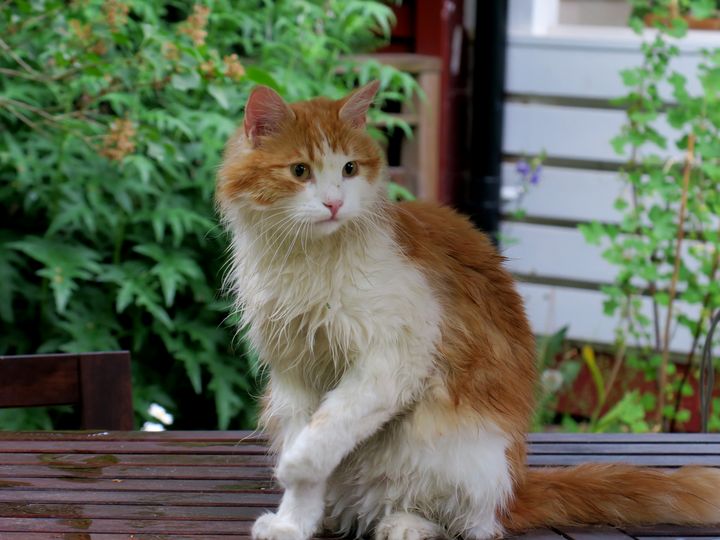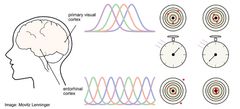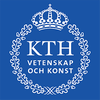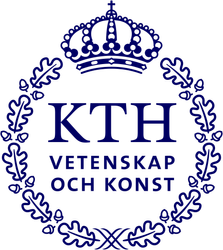In sensory perception, brain makes trade-offs between accuracy and speed

When an animal takes notice of an approaching figure, it needs to determine what it is, and quickly. In nature, competition and survival dictate that it’s better to think fast—that is, for the brain to prioritize processing speed over accuracy. A new study shows that this survival principle may already be wired in the way the brain processes sensory information.
Neuroscientist Arvind Kumar, an associate professor at KTH Royal Institute of Technology, says that the study offers a new view of neural coding of different types of inputs in the brain.
Kumar and fellow KTH neuroscientist Pawel Herman collaborated with KTH information theorists Movitz Lenninger and Mikael Skoglund to study input processing in the brain using information theory and computer models of the brain.
The new study surprisingly shows that initial visual processing is “quick but sloppy” in comparison to information processing in other parts of the brain’s vast neural network, where accuracy is prioritized over speed.
By studying simulations of input processing in the brain, the researchers found that neurons appear to favor speed over accuracy. Kumar cautions that the study did not focus on actual animal or human behavior, but the results are based on mathematical models of classical experimental data about how individual neurons response to inputs.
Their finding, he says, is a direct contradiction of the “efficient coding hypothesis” proposed by Horace Barlow in 1961, which holds that the brain tries to maximize information about the sensory inputs.
However, Kumar says: “We can be certain that our brains fight between speed and accuracy.”
In order to survive, animals must infer their sensory inputs rapidly. When an animal sees a pattern of lines in its visual inputs, it must not only extract the orientation of the lines but also do it quickly enough so as to run away in case it turns out to be a predator. “That is, the speed by which information can be extracted can sometimes be more important than the accuracy of the extracted information,” he says.
But different parts of the brain have their own “coding strategies,” Kumar says. In contrast to neuronal activity related to vision, neurons in the part of the brain that forms a representation of space—or a sense of where one is—seem to favor accuracy instead of speed.
The conclusions are drawn from analyzing “tuning curves” in simulated neuron networks. Similar in appearance to wave forms, these curves show the firing rate of neurons for specific features of stimulus, while curves in other parts of the brain are matched to different kinds of input.
The reason these shapes matter is that they show different kinds of activity. In the entorhinal cortex, a network hub for memory, navigation, and the perception of time, the curves have multiple peaks and they are more periodic. Lenninger says that these types of curves, suggest higher accuracy in decoding the input, albeit at slower speed unlike the single-peaked curves found in early sensory regions.
“Up to this point research has focused only on maximizing information, ignoring the fact that animals have finite time to respond to the inputs,” Lenninger says. Now by taking the time factor into account, the study suggests that vital speed-accuracy trade-offs are already present in the wiring or tuning of neurons. The brain may not encode all types of information in the same way and with the same precision.
“It would seem that we can process sensory inputs quite fast with rather small errors,” Kumar says. “But large errors are more likely if we try quickly to determine complex cognitive information associated with the sensory inputs—like memories associated with the input.”
Keywords
Images


About KTH Royal Institute of Technology
Since its founding in 1827, KTH Royal Institute of Technology in Stockholm has become one of Europe’s leading technical and engineering universities, as well as a key centre of intellectual talent and innovation.
KTH works with industry and society in the pursuit of sustainable solutions to some of humanity’s greatest challenges: climate change, future energy supply, urbanisation and quality of life for the rapidly-growing elderly population. We are addressing these with world leading, high-impact research and education in natural sciences and all branches of engineering, as well as in architecture, industrial management, urban planning, history and philosophy.
KTH is Sweden’s largest technical research and learning institution and home to students, researchers and faculty from around the world.
Subscribe to releases from KTH Royal Institute of Technology
Subscribe to all the latest releases from KTH Royal Institute of Technology by registering your e-mail address below. You can unsubscribe at any time.
Latest releases from KTH Royal Institute of Technology
Study explains why new kinds of steel needed to build lead cooled reactors11.12.2025 14:23:59 CET | Press Release
Safer operation, better fuel efficiency and lower waste mark lead-cooled nuclear power as a potentially dramatic shift from the water-cooled nuclear stations the world has relied on since the mid 20th century. A recent Swedish study casts new light on how to avoid corrosion in the steel used to build these next-generation nuclear facilities.
Alternative to BPA passes toxicity and sustainability standards set by EU innovation guidelines4.12.2025 11:07:37 CET | Press Release
Polyester and a host of other plastic products could potentially be manufactured with non-toxic and sustainable BPA alternatives identified in a multidisciplinary study published today by researchers in Sweden.
Study shows potential for more affordable and efficient hydrogen gas production3.12.2025 15:29:35 CET | Press Release
A recent advance in the science of hydrogen fuel production could enable higher output and more sustainable production of this renewable energy source, researchers with Stockholm’s KTH Royal Institute of Technology report.
Calcium-sensitive switch designed to boost efficacy of cancer drugs24.11.2025 21:11:53 CET | Press Release
Cancer-fighting antibody drugs are designed to penetrate tumor cells and release a lethal payload deep within, but too often they don’t make it that far. A new study shows how this Trojan Horse strategy works better by exploiting calcium differences outside and inside cells.
Potential treatment may prevent brain damage in premature babies11.11.2025 11:10:46 CET | Press Release
A treatment that could protect premature babies from brain damage showed promise in a recent study in Sweden. Using a first-of-its-kind prenatal brain model created with human cells, researchers observed new details about the effects of cerebral hemorrhages on stem cells during premature birth. And they successfully tested an antidote that reduced the damage.
In our pressroom you can read all our latest releases, find our press contacts, images, documents and other relevant information about us.
Visit our pressroom
